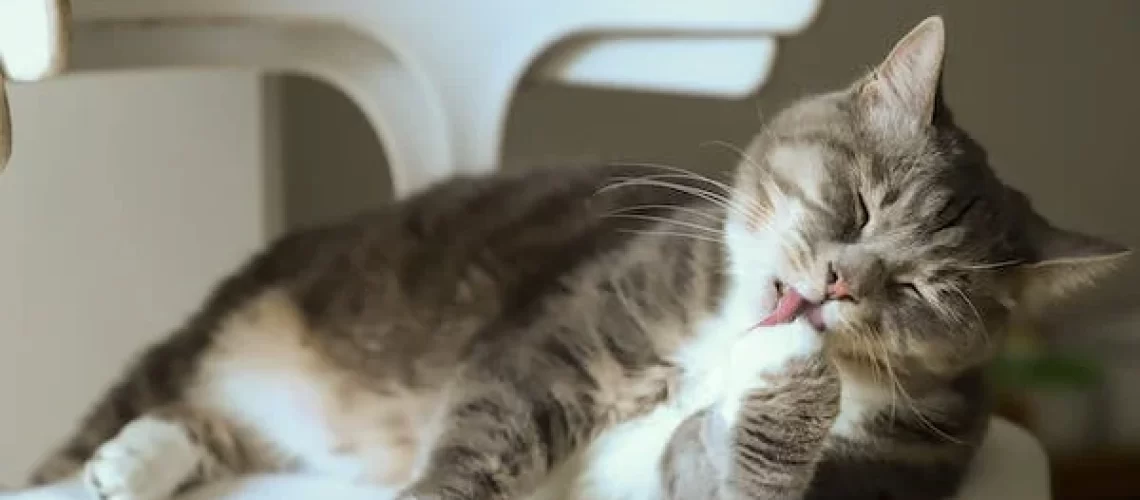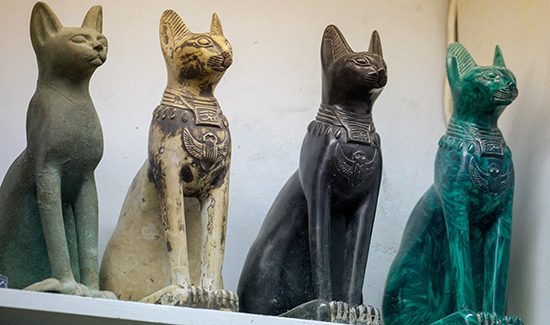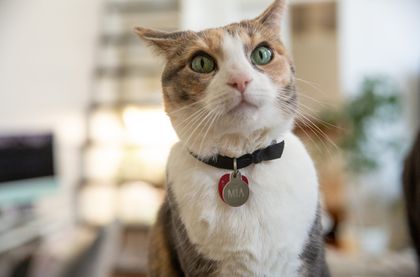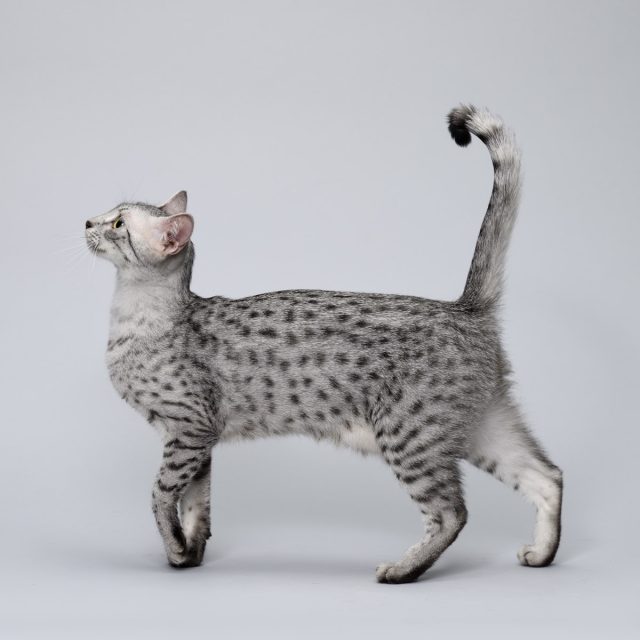Introduction
Cats have come a long way from their wild and mysterious beginnings to becoming our beloved pets. If you've ever wondered how these independent and sometimes sassy creatures found their way into our homes and hearts, you're in for an interesting journey.
In this article, we will explore the amazing story of how cats transformed from being wild hunters to becoming our trusted companions. You'll discover the special traits that make them such perfect pets and learn about the ancient civilizations that adored them. From ancient Egypt to the modern world, cats have made their mark as more than just pets – they're cherished members of our families. So, let's embark on a fascinating adventure to understand how cats have evolved into the wonderful pets we know today.
Wild Beginnings: How Cats Lived in the Wild
Long, long ago, cats weren't our fluffy pets. They were wild creatures, roaming the wilderness. Cats are amazing hunters and their wild ancestors had to be, too. They needed to hunt to find food.
In the wild, cats were solitary animals. That means they liked to be alone. They would hunt, rest, and do their own thing. They were very good at sneaking up on their prey because they had sharp claws and keen senses.
The Cat-Human Connection: A Long History
Cats have been a part of our lives for a very, very long time. Thousands of years ago, our ancestors realized that cats could help them. Cats are great at catching mice and other pests. So, humans started to welcome cats into their homes and lives.
The ancient Egyptians were some of the first people to really love and appreciate cats. They believed that cats were special and even worshipped them as symbols of grace and protection. Cats were so important to them that harming a cat, even by accident, was a very serious crime.
Cats began to live alongside humans, helping us by keeping our homes free of pesky rodents. Over time, they became our friends, not just because they were helpful, but because they brought us comfort and joy with their company. The bond between cats and humans has grown strong and special, and it's a connection that has lasted for a very, very long time.
The Journey to Domestication
Cats, as we know them today, weren't always the furry residents of our homes. Their journey from the wild to our welcoming abodes is a fascinating tale.
When Cats First Came to Our Homes
It's believed that cats started living with humans around 9,000 years ago. They didn't just stay outside; they joined us indoors. At first, it was a mutual arrangement. Cats kept our homes free from pests, and in return, they got a warm place to sleep and a regular meal. It was a win-win situation.
How Cats Changed to Fit Our Lives
As cats became part of our homes, something interesting happened. They started to change a little bit. Over time, they became more social and friendly. You see, in the wild, they were solitary hunters. But in our homes, they learned that being friendly to humans had its benefits. We gave them tasty food, cozy spots to nap, and lots of attention.
So, cats adapted to living with us. They developed behaviors and traits that made them even better companions. They learned to purr, which is like their way of saying, "I'm happy and content." They also got softer, fluffier coats that we couldn't resist petting.
This transformation is part of what we call "domestication." It's how animals become more like us and fit into our lives. Cats did it so well that now they're not just our helpers; they're our friends and furry family members. They've changed a lot over thousands of years, all to be the perfect companions in our homes.
Cats in Ancient Times
Cats had a special place in the history of many ancient civilizations, and their stories are quite fascinating.
Cats in Ancient Egypt
One of the most famous stories about cats in ancient times takes us to Egypt. In ancient Egypt, cats were not just pets; they were like royalty. People loved them, and they even believed that cats had special powers. They thought cats could protect them from evil spirits and bad luck.
Cats were so important in Egypt that they were often featured in art and sculptures. You can find many ancient Egyptian paintings and drawings of cats, which show just how much they adored these furry friends. In fact, harming a cat, even by accident, was considered a serious crime in ancient Egypt. They were that highly respected!
Cats were not only seen as protectors but also as companions. They would often share people's homes, providing warmth and comfort. These ancient Egyptian cats were treasured members of families, and they lived like little kings and queens.
Cats in Other Ancient Civilizations
It wasn't just in Egypt that cats were appreciated. In other ancient civilizations like Greece and Rome, cats also played important roles. They were often seen as symbols of grace and agility. People admired their hunting skills and often associated them with goddesses who represented these qualities.
In some cultures, cats were thought to bring good fortune and were welcomed into homes to bring blessings. In others, they were believed to have mystical powers and could ward off evil spirits. Cats' presence in these ancient societies was not only practical but also deeply woven into their beliefs and culture.
So, as you can see, cats were more than just pets in ancient times. They were respected, revered, and had a significant impact on the lives and beliefs of the people in these ancient civilizations.
Cats in the Middle Ages
The Middle Ages, which lasted from the 5th to the 15th century, was a time of great change and challenges in Europe. During this period, cats continued to play interesting and sometimes mysterious roles in people's lives.
Cats and Superstitions
In the Middle Ages, people held many superstitions and beliefs about cats. Some folks thought that black cats were bad omens and believed that they brought bad luck. It was even said that witches could transform into black cats to do their magic. This superstition led to many black cats being unfairly mistreated.
On the other hand, some believed that cats had the power to protect homes from evil spirits. They would often keep a cat as a pet, hoping that it would keep their family safe from harm. These superstitions show that cats were both feared and respected in different ways during this time.
Cats and Pest Control
While cats had their superstitions to contend with, they also played a crucial role in keeping people's homes and food stores safe. The Middle Ages was a time when people had to store grains and other food supplies for the winter. This attracted rodents like rats and mice, which could destroy the precious food.
Cats, with their hunting skills, were seen as valuable allies in the battle against these pests. Many households welcomed cats to help keep the rodent population in check. Cats became the unsung heroes of this period, guarding food stores and helping to protect people from the spread of disease carried by these pesky rodents.
So, in the Middle Ages, cats had a mix of roles, from being feared by some due to superstitions to being highly valued for their skills as pest controllers. Their presence was essential during a time when food security was a significant concern for many people.
Cats in Modern Times
In the modern world, cats have become an integral part of our lives, and they hold a special place in our hearts.
Cats in Our Homes Today

Cats have transitioned from being working cats to cherished members of our families. Today, you can find cats in homes all over the world, and they play a unique role. They are no longer just hunters but beloved pets that provide comfort, companionship, and endless entertainment.
Cats have their special spots in our homes, whether it's a sunny windowsill where they can watch the world go by or a cozy corner where they curl up for a nap. They have their toys and scratching posts to keep them happy and active. Modern homes are designed with our feline friends in mind, providing them with everything they need for a comfortable life.
Why We Love Our Cats
There are countless reasons why people adore their cats. For one, cats have unique personalities. Some are curious and playful, while others are calm and cuddly. They bring joy to our lives with their quirky behaviors, like chasing a laser pointer or pouncing on a feather toy.
Cats are also great companions. They may not be as demanding as dogs, but they can be incredibly affectionate. The soothing sound of a cat's purr can be a source of comfort and relaxation, and their presence can provide a sense of security.
Cats have a way of forming strong bonds with their human companions. They may snuggle up with us when we're feeling down or keep us company during quiet moments. These connections are built on trust and mutual affection, making cats not just pets but also friends who are always there for us.
In modern times, cats have truly become members of our families, offering us comfort, joy, and unwavering companionship. Their unique personalities and the strong bonds they form with us make them some of our most beloved and treasured friends.
The Special Traits of Pet Cats

Independent Yet Affectionate
Cats are known for their independence, but they can also be very affectionate. They often choose when they want attention, and their purring and cuddles show their love.
Low Maintenance
Cats are relatively low-maintenance pets. They clean themselves, use a litter box, and are often content with some toys and a comfy spot to rest.
Great Hunters
Even though they're domesticated, cats still have strong hunting instincts. They may "hunt" toys or even pests around the house, which can be helpful.
Grooming Experts
Cats are meticulous groomers, keeping themselves clean. This means they are usually odor-free and don't require regular baths.
Communication Skills
Cats communicate with body language, meowing, and purring. They can convey their needs and emotions through these cues.
Playfulness
Cats enjoy playtime, which not only keeps them active but also provides entertainment for their owners.
Natural Pest Control
Cats can help keep your home free from pests like mice and insects.
Adaptability
Cats can adapt to different living situations, from small apartments to large houses.
Quiet Companions
Cats are often quieter than dogs, making them a good choice for people who prefer a quieter environment.
Longevity
Many cats live for over a decade, providing years of companionship.
Healing Purr
Some believe that a cat's purring can have a calming and healing effect on humans.
These special traits make pet cats unique and cherished members of many households.
The Future of Our Feline Friends
As we look ahead to the future, it's exciting to think about the role of cats in our lives and the potential for even deeper connections with our feline companions. Here are some thoughts on the future of our beloved cats:
Advanced Cat Care
Expect improved healthcare and preventive measures for longer, healthier cat lives.
Technology Integration
More tech innovations will make cat ownership convenient and enjoyable.
Enhanced Understanding
Deeper insights into cat behavior will foster better relationships with our feline companions.
Adoption and Rescue
A growing emphasis on cat adoption and responsible ownership.
Feral Cat Welfare
Comprehensive strategies for managing and protecting feral cat populations.
Advocacy and Welfare
Increased efforts to protect and care for all cats with kindness and compassion.
Therapy Cats
More cats used as therapy animals for comfort and companionship.
Sustainability
Eco-friendly cat care choices to reduce the environmental impact of pet ownership.
The future of our feline friends promises advancements in their care, technology integration, a deeper understanding of their behavior, and increased efforts in advocacy and welfare, making our bond with them even more rewarding and sustainable.
Conclusion
The journey of cats from their wild beginnings to becoming our beloved pets is a remarkable tale of friendship and evolution. Cats have transitioned from being independent hunters to cherished members of our households.
As we've traveled through history, cats have left their mark in ancient Egypt and the Middle Ages, each era contributing to the unique bond we share with them. In modern times, they have become an integral part of our lives, offering companionship and comfort.
Looking to the future, we can expect an even stronger connection with our feline friends. With advancements in cat care, better understanding of their behavior, and increased advocacy for their welfare, our bond with cats will continue to be heartwarming and enduring.
In the end, cats have evolved into our best friends, providing us with love, joy, and a sense of belonging. They are not just pets; they are our furry companions, and their presence enriches our lives in countless ways.

















